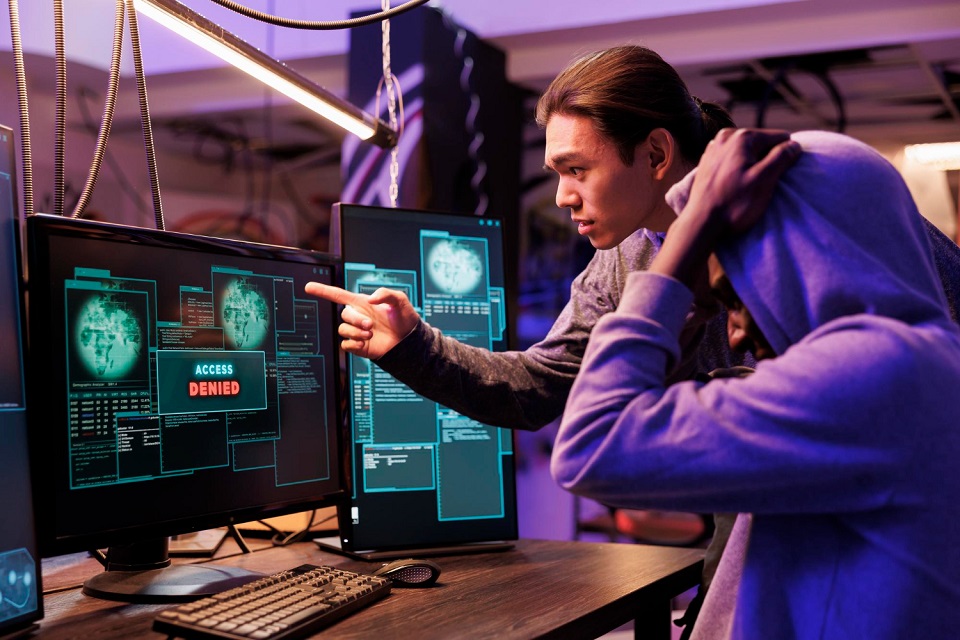The gentle hum of a smartphone buzzing with notifications, the rhythmic tapping on a keyboard, and the soft glow of a screen in a dimly lit room – these are the familiar hallmarks of modern life steeped in personal technology. Our devices are as much a part of our personal identity as the clothes we wear or the music we enjoy. However, in the same way that we secure our homes and safeguard our physical belongings, the burgeoning importance of cybersecurity in personal tech cannot be understated. It is an armoured shield defending the intimate details of our digitised existence.
But what does the future hold for personal tech cybersecurity? As we journey through this ever-evolving landscape, several key trends stand out as beacons, illuminating the path ahead. These developments are not merely advancements of technology; they symbolise the progression of our online life and the enduring quest for a secure personal digital experience that feels as natural as conversation.
Table of Contents
Trend 1: Personalization Of Cybersecurity
In the not-too-distant future, cybersecurity measures will become deeply personalised—tailored to fit each individual’s lifestyle and preferences. Just as a musician tunes their instrument to achieve perfect harmony, cybersecurity will be fine-tuned to the unique rhythms of our digital behaviour. Recognizing the user’s patterns and habits, personal tech will seamlessly adjust security settings and alerts in real-time, striking a balance between proactive protection and user convenience.
Trend 2: The Emergence Of Emotional AI
Artificial Intelligence (AI) is already a game-changer in tech, but its next leap will see it becoming more emotionally intelligent. AI could soon detect stress or discomfort in our voices or typing patterns and respond by enhancing security measures when we’re most vulnerable. This shift will not only enhance protection during critical moments but also create a more compassionate and responsive cybersecurity environment.
Trend 3: Cybersecurity As A Lifestyle Choice
Cybersecurity is transcending its traditional role as a tech feature and becoming a lifestyle choice. With growing awareness about the value of personal data, people are actively choosing products and services that align with their privacy ideals. Services like Mysterium VPN, with its commitment to decentralisation and user empowerment, are examples of this trend toward choosing technologies that offer control back to the individual. The future may bring a marketplace where cybersecurity features are key differentiators for personal tech products, much like organic labels are for food.
Trend 4: Evolution Of Identity Protections
Identity theft is a profound violation of one’s privacy. As technology evolves, so too will our approach to protecting digital identities. Biometrics will go beyond fingerprints and facial recognition, possibly embracing more complex identifiers such as vein patterns or behavioural biometrics like keystroke dynamics. Users will have digital “passports” that are intricately layered with multiple facets of their identity, making it exceedingly difficult for cybercriminals to replicate.
Trend 5: The Convergence Of Physical & Cybersecurity
The line between the physical and digital worlds is blurring, and this convergence will lead to a reimagining of cybersecurity. With personal tech extending its reach into wearable devices and implantable technology, the scope of cybersecurity will expand to include the safety of our physical well-being. Future security systems will be tasked with protecting not just data, but also the integrity of the physical tech that we may come to rely on.
Trend 6: Cyber-Ethics & The Responsibility Paradigm
Cybersecurity is also prompting us to reflect on ethics in the digital age. Personal tech will increasingly incorporate ethical guidelines into its design and functionality, considering not only how to protect users but why it’s imperative to do so in certain ways. In this future, developers and manufacturers of personal tech will be seen as stewards of ethical use, embedding principles of fairness, privacy, and accountability into the fabric of their products.
Trend 7: Hyper-Connectedness & Collective Security
As we march toward an ever more interconnected reality, we will witness the rise of collective cybersecurity strategies. Much like a community watch program, future cybersecurity ecosystems will rely on the shared vigilance and cooperation of users. Networks of devices will collaboratively detect threats and disseminate defences, creating a communal shield against cyber threats.
Trend 8: The Simplicity Movement
As our digital lives become increasingly complex, there will be a corresponding trend towards simplicity in cybersecurity. Complex passwords and elaborate security protocols will give way to simplified security experiences that are more intuitive and user-friendly. The success of cybersecurity in personal tech will be measured not just by its effectiveness but by its ability to be almost invisible to the user, by integrating seamlessly into daily interactions with technology.
The Human Element Of Cybersecurity
It is essential to remember that at the heart of every trend, every innovation, and every line of code, there are people. The future of cybersecurity in personal tech is not just about the gadgets we hold or the digital realms we explore; it’s about preserving the sanctity of our personal stories, memories, and connections that are increasingly enshrined in binary code.
As we lean into the future, cybersecurity will evolve to become a more empathetic and intrinsic part of our digital lives. It will adapt to our needs, learn from our mistakes, and guide us with a gentle, almost imperceptible hand. We will not merely use technology; we will coexist with it in a mutually beneficial dance of digital and analog life. In this future, personal tech will cease to be an inanimate tool and instead become a trusted friend – one that looks out for us, understands us, and above all, protects us.



